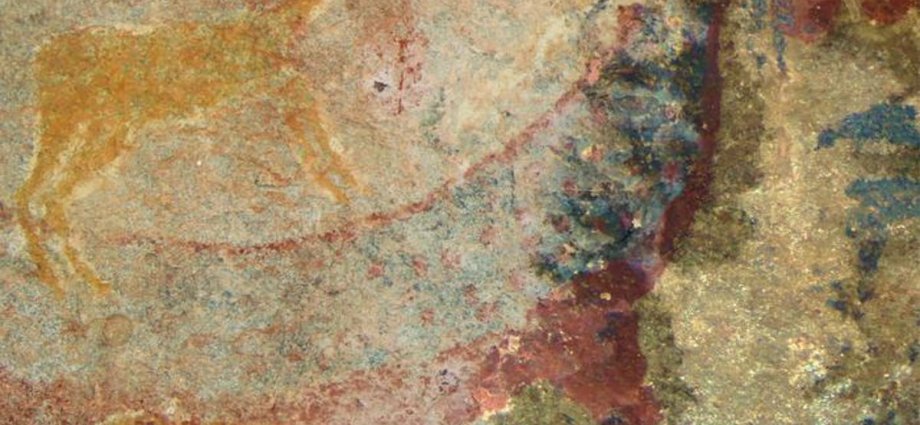A strange tusked creature depicted by indigenous people in South African rock art appears to be a long-extinct species predating dinosaurs, according to a new study.
The research, published on Wednesday in the journal PLOS ONE, found that a cryptic animal painted by South Africa’s San people in the early 1800s could be inspired by an extinct species.
The Horned Serpent panel is a section of rock wall featuring artwork of animals and other cultural elements painted between 1821 and 1835.
Researchers have long sought to identify a long-bodied animal depicted in the rock art with downward-turned tusks that doesn’t match any known modern species.
The Karoo Basin of South Africa is known to have abundant well-preserved fossils, including of tusked animals called dicynodonts – often found eroding out of the ground.
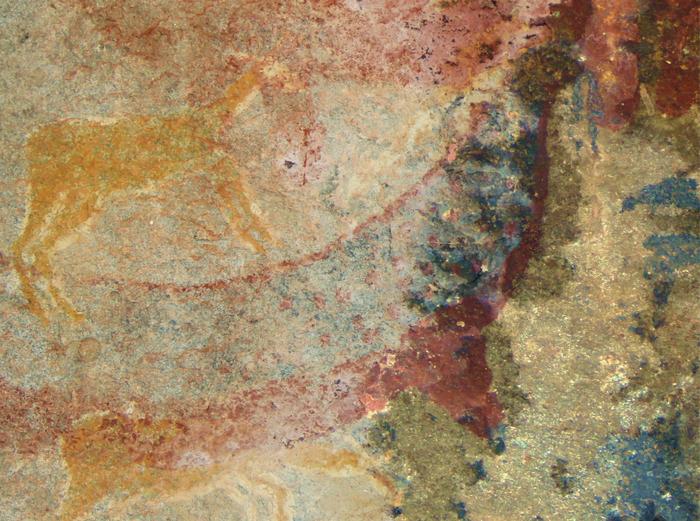
Now, scientists suspect the tusked figure in the rock art is comparable with dicynodont fossils.
This interpretation, they say, is supported by San myths of large animals that once roamed the region.
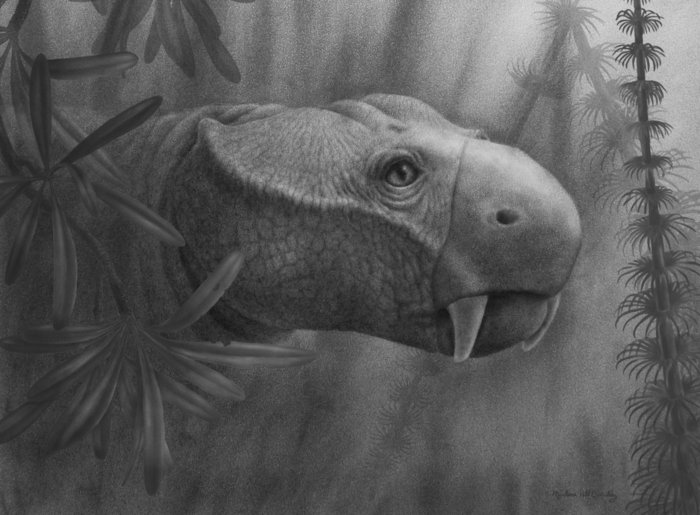
If the artwork is found to truly be of a dicynodont – a species which went extinct before dinosaurs – then the San people’s depiction could predate the first scientific description of the ancient beasts by at least 10 years.
“The painting was made in 1835 at the latest, which means this dicynodont was depicted at least ten years before the western scientific discovery and naming of the first dicynodont by Richard Owen in 1845,” said study co-author Julien Benoit.
“This work supports that the first inhabitants of southern Africa, the San hunter-gatherers, discovered fossils, interpreted them and integrated them in their rock art and belief system.”
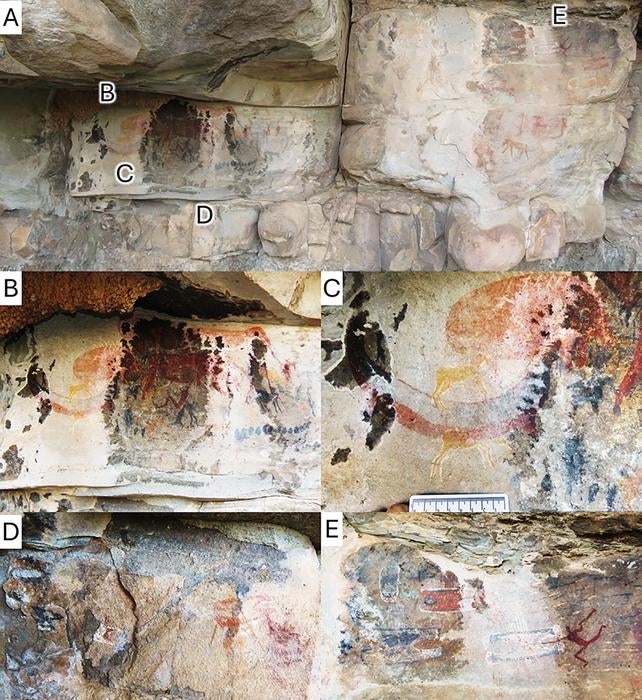
The findings add to archaeological evidence that the San people likely collected fossils and incorporated them into their artwork.
Even if the Horned Serpent panel is found to have only had spiritual meaning, researchers say the depicted beast may have been imagined “based on a dicynodont fossil“.
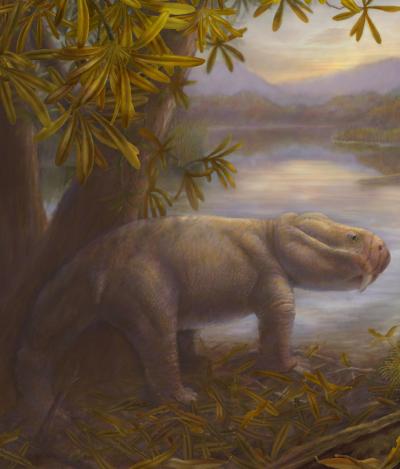
“The spiritual and palaeontological interpretation of this painting are not mutually exclusive.”
Based on the research, scientists say the true extent of indigenous knowledge of palaeontology across Africa could be “poorly understood”.
They call for further research into how indigenous cultures across the world interpreted and incorporated fossils in their work.











